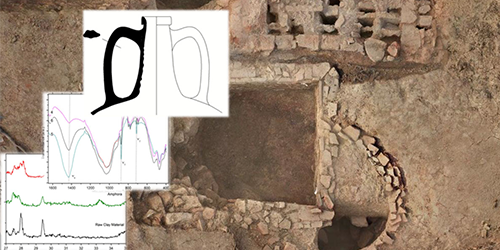
In the past, as well as in modern times, the main constructions techniques employed were fired bricks and raw earth techniques, such as mud-bricks, or adobe, torchis and rammed earth, the latter also known as pisé. Studying the technical aspects of ancient architecture is important for the safeguarding of heritage sites and can also offers attractive solutions for environmentally friendly buildings in the modern context.
Compositional characterization of earthen architecture fills the gap in knowledge on the type of soil, the chemical and mineralogical composition of the earthen walls, whilst the analysis of bricks and tiles is performed to determine the firing techniques of the materials. This method allows the examination of technological changes and a sustainability evaluation of the structures for conservation, thus providing a resource and a methodology that can assist future researches.
Firing is the final step in the production of a ceramic object and it is essential for the development of the final properties (e.g. strength, hardness, density) determined by the duration and conditions of the thermal treatment. Firing temperature, soaking time and cooling rate define the degree of densification, texture and mineralogy of the product, so the final quality of the material and its durability. Therefore, the research has the following aims:
- Compositional characterization of raw clayey material and earthen construction techniques
- Compositional characterization of fired bricks and ceramics
- Study of kilns performance and analysis of structures
- Experimental firing of the raw material to reproduce bricks and ceramics with a controlled process
The analytical methods employed in the research are: powder X-rays diffraction (PXRD), X-rays fluorescence (XRF), Fourier-transform infrared spectroscopy (FTIR), Thermogravimetric analysis (TG-DTG), SEM (Scanning Electron Microscope).
